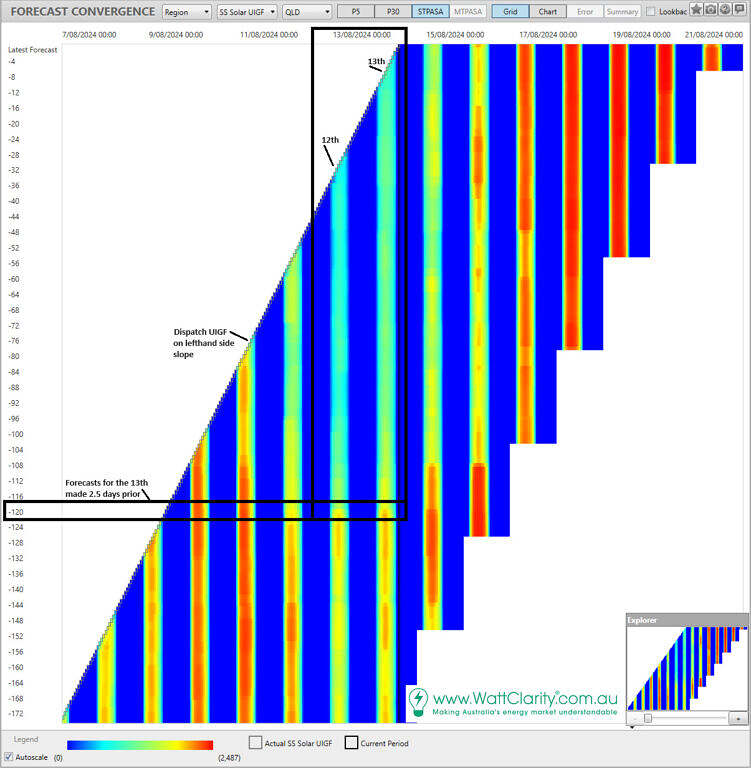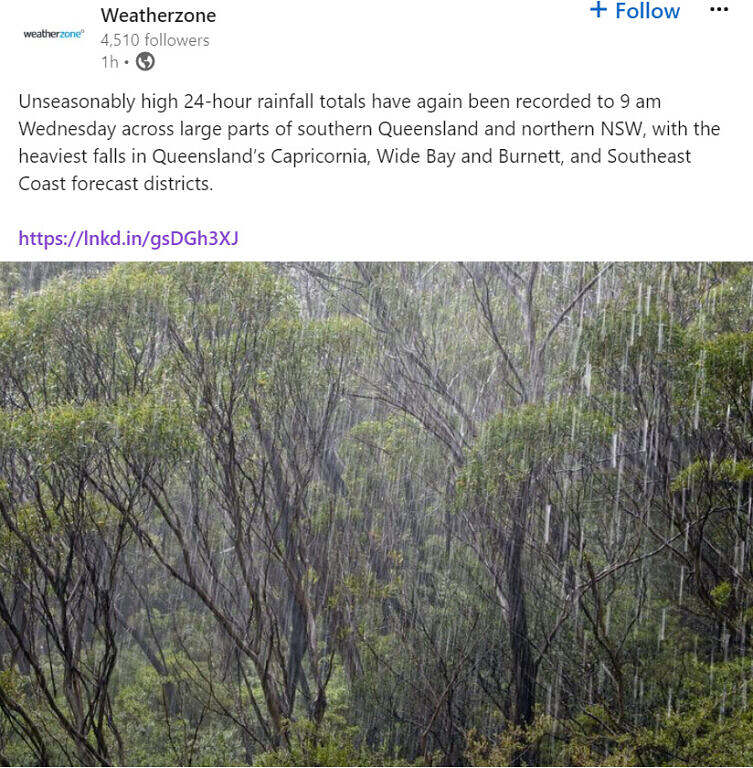A Weatherzone post on Linkedin helped us understand the extent of the deluge that had poured down on Queensland and northern New South Wales in recent days.
Rainfall totals were extreme on the 12th and 13th August 2024, leading into 9am Wednesday on the 14th. Weatherzone reported it was the wettest pair of days in August on record in Rockhampton!
The post intrigued us to check for the expected impacts to solar energy production. Because, of course, where there’s rain there’s usually cloud. We focused on Queensland in this post.
Reduced large-scale solar was forecast in advance
Firstly we looked at large-scale solar availability using ez2view’ forecast convergence widget. The UIGF is the unconstrained intermittent availability forecast – essentially the estimate of how much power the solar units will produce given the sunshine and any physical restrictions.
The image below, captures the 13th and the 12th as the two recent days where potential solar output was expected to be considerable lower than usual. The reduced levels were well forecast as indicated by the outlooks made 2.5 days earlier (t-120 periods before latest forecast).

AEMO large-scale solar forecasts anticipated the reduced availability 2.5 days in advance. Source: ez2view.
Rooftop solar was near-lowest for the winter
We analysed the estimated output of rooftop solar panels in Queensland. Understandably, output was a near-record low for the 2024 winter.
The following chart shows how output on the 12th and 13th were both well below average (mean) for the winter to-date.
Hovering over 12:00 we can see that only 4 other days have seen similarly low midday levels.



Great information. it is interesting the minimum to the maximum, better than 25% which confirms that solar produces even on days of cloudy weather.